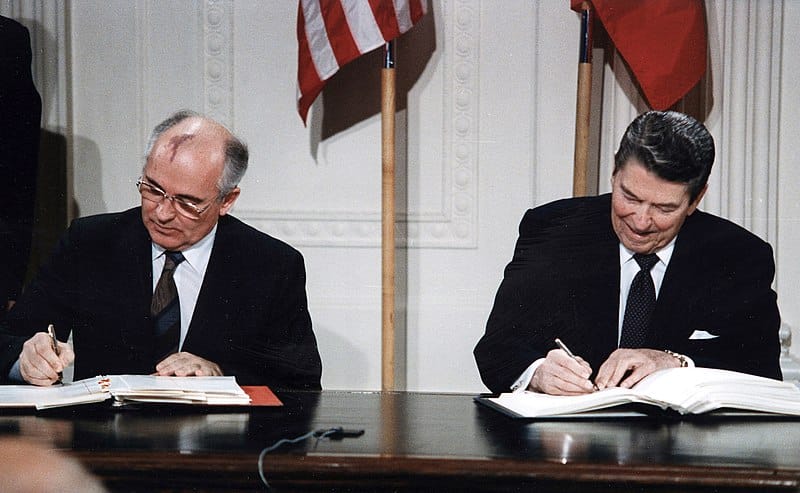The Hazelnut

The world changed last Thursday. That's the day Russia launched a missile they call the Oreshnik, the "Hazelnut." Utilizing never-before-seen technology, the "Hazelnut" can reach speeds of Mach 11, which is 8,370 mph. The missile contains six multiple independent warheads, each warhead containing six sub-munitions, for a total delivery of 36 explosions on target.
On Thursday, the Oreshnik took out one of Ukraine's principal missile and rocket production facilities, the PA Pivdenmash. This plant has operated since 1954, when it was one of the Soviet Union's chief makers of rockets and missiles. Russia believes that Ukraine is preparing to domestically produce short—and intermediate-range missiles analogous to the American ATACMS missiles, which recently struck Russia directly.
The purpose of this strike was threefold: first, to retaliate against the American ATACMS missile strike of the week before; second, to eliminate any future Ukrainian missile production; and third, to demonstrate Russia's latest missile technology.
On Thursday, US Defense Department Spokesperson, Sabrina Singh, reported:
"I can confirm that Russia did launch an experimental intermediate-range ballistic missile...This IRBM was based on Russia's RS-26 Rubezh intercontinental ballistic missile model. In terms of notifications to the United States, the United States was prenotified, briefly, before the launch, through nuclear risk reduction channels." She went on to say:
"It could be refitted to certainly carry different types of ... conventional or nuclear warheads."
https://www.defense.gov/News/News-Stories/Article/Article/3975321/russians-launch-new-missile-at-dnipro-us-provides-ukraine-with-new-tactical-wea/
Perhaps revealing more than she realized, let's unpack these comments. First, Ms. Singh indicates that Russia "prenotified" the United States that the missile was being fired. Other reports are that the US and Ukraine had a half-hour lead time. Yet, even after being placed on notice, US and Ukrainian anti-air systems were unable to intercept the Oreshnik.
Later that same day, Russian President Vladimir Putin said flatly in a televised address that the Oreshnik could not be intercepted by any existing anti-missile systems. Russia vividly demonstrated that point when, in spite of a half-an-hour warning, the missile struck its target.
Finally, and perhaps most concerning, Ms. Singh points out that the Oreshnik was developed from the Russian RU-26, an Intercontinental Ballistic Missile capable of striking the United States. We can assume then that while the Oreshnik represents a direct threat to Europe, the RU-26 would threaten the American heartland. Both likely possess the speed and maneuverability that makes them impossible for current Western anti-missile systems to intercept.
Perhaps most regrettable is that all of this was anticipated by the leaders of the two nuclear superpowers 37 years ago. In December 1987, Mikhail Gorbachev of the then Soviet Union and Ronald Reagan of the United States signed the Intermediate-Range Nuclear Forces Treaty (INF), which effectively outlawed just the type of missile that the Oreshnik represents.
For 32 years, the production of any Intermediate-Range missile by either country violated the Treaty. That all came to an end in 2019, during President Donald Trump's first term in office. Then, Defense Secretary Mark T. Esper reported that the United States was withdrawing from the Treaty.
"This withdrawal is a direct result of Russia's sustained and repeated violations of the treaty over many years and multiple presidential administrations."
https://www.defense.gov/News/News-Stories/Article/Article/1924779/us-withdraws-from-intermediate-range-nuclear-forces-treaty/
Whether Russia failed to comply with the Treaty is a matter of continuing debate. But one thing remains: the US withdrawal has put us in a nearly untenable position today. Although America, and for that matter Europe, would prefer that Russia not build such devastating weapons, the current reality is that there is no international provision to prohibit such a missile as the Oreshnik.
Today, the Russian Federation has raised a "Sword of Damocles" above the heads of both Europe and the United States. For Europe, the Oreshnik could devastate many of its major cities within a 15-minute flight time. For the United States, much of the East Coast could be in ruin within an hour.
Let us pray that the American and Russian leaders will have the good sense to return to the negotiation table we left five years ago.